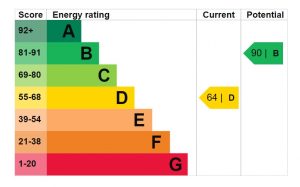Green Lease Provisions – an emerging force in lease negotiation.

A Client Paper on an Important and Evolving Lease Trend.
Introduction and Background
Green Lease provisions are becoming more common with an increased appetite for green clauses in lease negotiation and drafting. As these are being driven by tenants as well as by landlords, clients need to be aware of and advised about Green Lease Provisions.
In this context it’s important to establish what are the ESG (Environmental Social and Governance) objectives of each party to a leasing transaction. Are they aligned shared and consistent. What is the current EPC rating, what works might be required. How are these to be reflected in the lease and how realistic is this for the business.
Who pays for what e.g. improvements. Access and disruption. How “Green” is the lease, for example to maintain and / or improve. Green credentials – are light green / dark green provisions more relevant. In reality there have been few disputes to date as most clauses are currently reasonably standard. Moving forward the landscape may become more challenging as clauses become more specific and bespoke.
Key Dates
1/1/2018 F/G – to grant renewal or extension leases
1/4/2023 EPC Band E- also continuation leases.
2027/2030 EPC Bands C/B provisional
EPC Regulations are tightening up, just as we are coming out of a challenging period with pandemic exit, Brexit, hybrid / inflation also generally shorter more flexible leases.

Green Terms in HOT’s Small Survey Feedback
Green Lease Provisions in heads of terms are represented by less than 50% of agent’s subject to contract terms sheets.
Most frequent items which are included and should be considered are –
General sustainability and cooperation
Service charge items
Consumption and waste commitment
Specific MEES rating and certification
Landlords work outside of the demise
Landlords work within the demise
Others – data restrictions on tenant works
Adoption methodology
A general Memorandum of Understanding – this has low enforceability. By General Regulations – not legally binding unless incorporated by reference – enforceability depends on the drafting of the lease. By strict performance clauses in the lease – highly enforceable.

General Sustainability Commitment and Green Certification
Various shades of green from – energy consumption, water consumption, waste demonstration, greenhouse gas emissions. Climate resilience , biodiversity. Social impact – modern slavery, local impact, employment of locals
Green Certification Definitions are usually based on the current rating and commitment to future rating. Light Green Clauses are less enforceable, moving to dark green where for example the Landlord and Tenant must cooperate with measurable outcomes, for example reduction in the output of Green House Gas Emissions.
Each party should have due regard to each other’s proposals. The more specific and measurable the easier it is for either party to remedy a breach. So, it is important to understand client ESG Commitments and Goals, for the landlord or tenant – also towards future proofing.
Environmental Provisions in a Service Charge are ranked highly (2nd) as the most negotiated item.
Service Charge – increased cost where the landlord carries out works and costs are pushed through the service charge. MEES Regulations proposed as a minimum C by April 2027 and B by April 2030 – will impact 85% of commercial properties.
Issues of disruption to provision of services and cost should ideally be dealt with in the lease whilst demonstrating a proportionate cost benefit to the Tenant, adding capital value to the property for the Landlord and attracting new Tenants.
Length of term of a lease/s impact this –
- Short lease unlikely to see benefits.
- Long lease much more likely.
Sometimes costs are capped, or there is a justified cost benefit with a tenant contribution. So both parties need to understand what works might be required to progress confidently ensuring proper provision for costs.
Landlord Right to do works in the demised area of the lease.
Without a specific right a landlord is not allowed to enter the demise to carry out works – for example environmental works necessary to bring the property up to the minimum MEES provisions. A clause might cover only those works required by MEES. Additional requirements maybe for a tenant to act reasonably and without delay for the landlord to carry out works. A dark green provision would be for no tenant consent to be required by the landlord i.e. they can simply access for the works.
Works
Who pays for the costs, causes as little disturbance and interference and makes good any damage, tenant consent for location and timing of works, clarification of works on rent review, also the yielding up obligations / impact on tenant dilapidation liability.
Disputes
In reality there have been few disputes as most clauses are currently reasonably standard. Moving forward the landscape may become more challenging as clauses become more specific and bespoke. With regard to Lease renewals Clipper Logistics (March 2022) – County Court, is useful. A 10 year lease of industrial premises. The court was asked to settle the lease duration, alterations and rent/interim rent. The landlord proposed a list of EPC standards.

The landlord proposed the tenant would not carry out alterations / additions, which in turn would result in the demise being EPC sub-standard.
So the landlord asked for
The tenant to indemnify the Landlord for the cost of obtaining a new EPC, if due to Tenant’s alterations.
The tenant to maintain the current EPC rating, yielding up with the same EPC rating as at the lease start, and carry out works to restore the EPC rating if it fell below the current level.
The Court Decision was based primarily on O’May – with the burden of proof for a landlord (or tenant) to justify material changes from the original lease. The proposed Landlord updated Clauses were rejected in majority by the Court. This was a County Court decision so a Junior Court. Some lease modernisation is usually accepted on balance. As Green Lease Clauses move forward new leases will more commonly include shared MEES landlord and tenant obligations.
All disputes are case specific, with disputes of course, usually about money and disruption.
The looking glass of future disputes will depend on their own facts and drafting of the Green Lease provisions. So embracing Green Clauses whole heartedly involves some unpredictability. The darker the green the more room for disputes around access and service charge particularly. Methods of enforcement, include forfeiture for breach, damages for loss, specific performance.
Forfeiture may not be an appropriate remedy in achieving green controls. This may in the future result in to carving out some Green provisions from such remedy.
Endeavours obligations, good faith obligations (honest according to general ordinary folk) contractual discretions (often in service charge provisions – Braganza reasonableness, makes this timely and reasonable) are varying levels of obligation with objective criteria. What amount of effort is required, persistence, is it “leaving no stone unturned” is there a reasonable level of sacrificing one’s own interest.
Author: CH Thomas Purpose: Awareness Guidance Notes Only (with leases always use a lawyer in conjunction with a surveyor)


